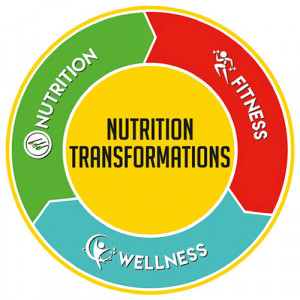
Dear Readers,
The holiday of Passover is here! The hard work and preparations are nearly done. Anticipation to be with family and friends for the Seders and holiday are all good. Passover has many customs and rituals that require mandatory eating. This translates to sitting around the dining room table for long periods of time and conversing while overeating on yummy goodies. For those who care about eating healthy and controlling their weight, holiday times can be a challenge. If you are worried about going down an abyss of uncontrollable holiday bingeing, Nutrition Transformations has helpful tips. Stay tuned.
The Sederim and Seudahs
To avoid overeating during the Seders, consume the mandatory requirements to fulfill the mitzvot “The kazayit” can mean various portion sizes depending on your following or custom. Whatever you accept as proper portions to fulfill a food-orientated mitzvah, consume only the required portion. Tips for the Seders: Enjoy small-medium pieces of karpas dipped in the salt water, consume only a small amount of charoset, and only the required amount of matzah. If you’re eating an egg, split it with another person.

Keep things to a minimum. (Consult with your rabbi.) Control portions while fulfilling the mitzvot.
Preparing the Seudah Meals
Seders and holiday dinners can be prepared to be healthy and calorie wise. Soups can be strained of fat and should not be creamed, or fat-based. Fresh tossed salad is a welcome low-calorie, nutrient-rich appetizer. Dress salads with low-calorie and olive oil-based dressings. Control portions! Fish is lower in calories than poultry and meat. Fish, poultry and lean meats can be tasty without using heavy salty-sweet-sour types of calorically high sauces. Instead use fresh herbs and spices to bring out the flavorful tastes of your foods. Side dishes can be challenging. Prepare plenty of low-calorie steamed vegetables and keep starches to a minimum. If you prepare starches for the meals, stick to boiled, baked or roasted starchy vegetables and avoid those high-fat toppings.
The Passover Diet
Consuming foods and meals over Pesach does not have to be different from our regular diets. This is true for Sephardim who can consume kitniyot. A plethora of kosher for Passover products is available. Remain vigilant of calories, sodium and sugar content. Keep food preparation simple and basic by using natural spices and herbs. Consume lean proteins, lots of vegetables and fruits. Select low-fat varieties of cheeses, yogurts and milk. Read labels! There are even lower calorie matzos available. Some are 90-110 calories per slice. Most matzos are 120-130 calories per slice. Portion-size control and calorie awareness will help you sail through this holiday challenge. It is a matter of being mindful and careful with eating during the holiday.
Going Away for the Holiday?
If you’re traveling to a hotel, the same principles apply. Be cognizant of what you are eating; avoid fattening dishes, sauces, and desserts; and stick to food products seasoned with spices and herbs. Consume fresh healthy fruit for dessert.
Don’t get caught in “The Matzah Trap.” Sounds like a fun board game. But seriously, I’m referring to mindlessly consuming slice after slice of matzah at Passover meals. Remember, putting cream cheese, butter and other toppings on your matzah is eating starch topped with calories! Consider a slice or square of matzah equivalent to a slice of bread. How many slices of bread do you usually eat at a meal? Note that challah, bread and matzah are all starches that are converted into glucose in the body. If you are a diabetic eating uncontrollable portions of matzah, this will raise blood sugar and for all of us cause weight gain.
Exercise … No Vacations!
On Yom Tovim we are tempted to overeat. Exercise is a way to help boost metabolism and burn the extra calories that would be converted into fat. A Yom Tov walk revs up the metabolism and keeps the body in fat-burning mode. During Chol Hamoed bike, swim, and lift weights—be active! Many resorts have beautiful gyms and pools. Take advantage of them. If you’re home and have gym equipment, use it, and get your money’s worth out of it!
Vegetable Matzah Brei With Cheese
Ingredients:
- 1 low-calorie matzah (90-110 calories)
- 1 raw egg or 3 egg whites or combine 1 egg with an extra egg white for more protein.
- 4 ounces low fat-cheese: cottage or chopped mozzarella (equal to 1 slice)
- Small amount of fresh chopped onion, pepper, mushrooms, zucchini
- PAM Spray
Instructions:
1. Beat the egg or egg whites until fluffy.
2. Add cheese to egg mixture.
3. Crunch up the matzah and put into the egg-cheese mixture. Soak together.
4. Spray a frying pan with PAM, add the chopped vegetables and fry till browned.
5. Take fried vegetables and put them aside.
6. Add more PAM Spray to the frying pan.
7. Add the matzah-egg-cheese mixture.
8. Add the fried vegetables to the egg-matzah mixture.
9. Fry till browned and then flip the brei to the other side to brown or roll in half.
Yummy and healthy.
Conclusion
It is wonderful to celebrate holidays with family and friends. These are treasured moments in our lives. Jewish custom and culture require seudas, which are enjoyable but can be a huge diet challenge to a weight-conscious person. Lengthy meals encourage overeating, emotional eating and bingeing. Consuming out-of-control portion sizes of calorically high foods can cause weight to go sky high. If you follow the Nutrition Transformations suggestions above, you will save yourself.
If you need to lose weight for improved health and wellbeing or wish to feel good about self-image, give us a call. Help is here for you … Happy Pesach!
Yours in good health, Jenn
718-644-1387
https://nu-transform.com













